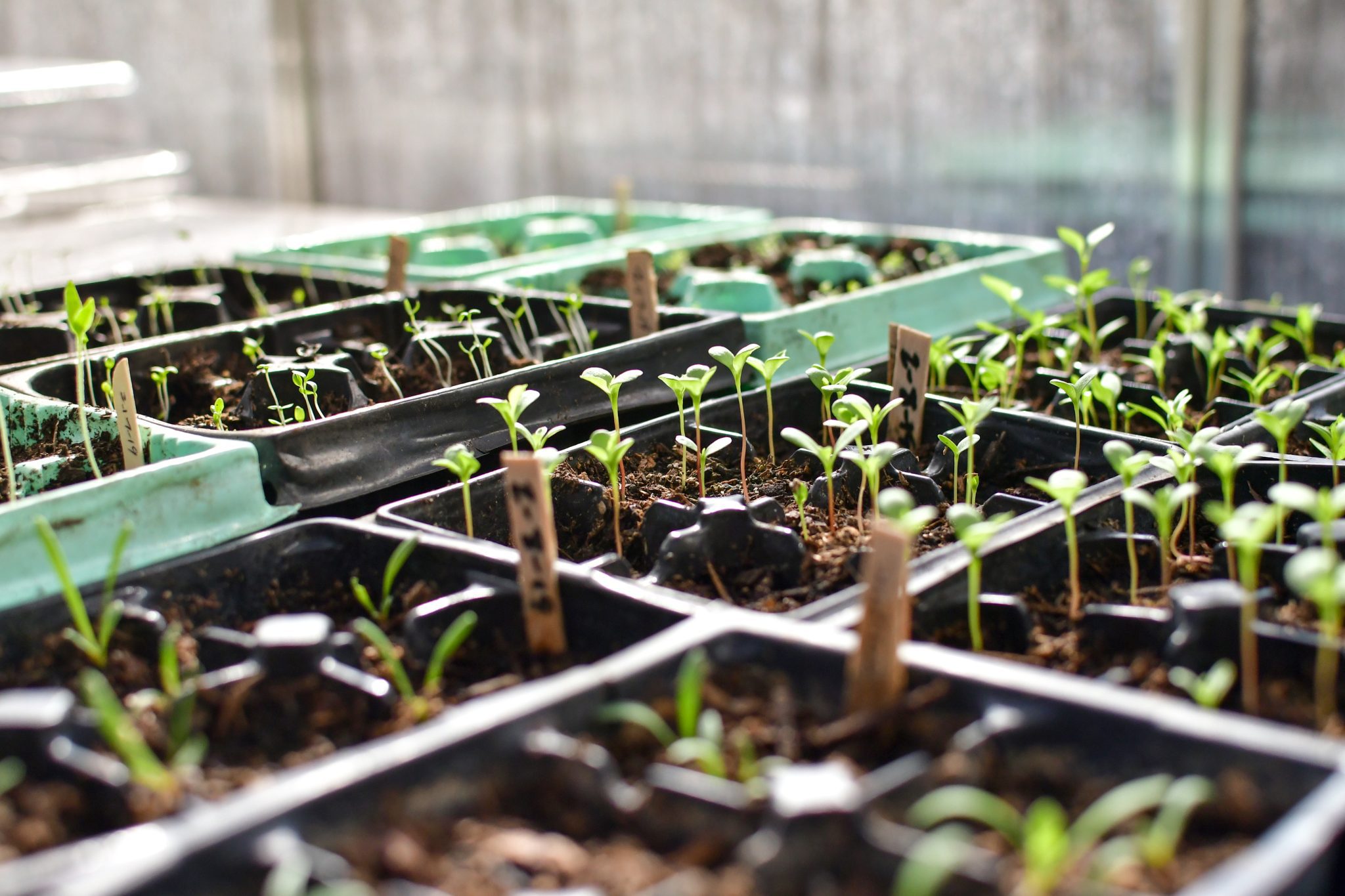Lawn & Garden

Several factors can restrict seed germination. While the most discussed factor is soil water availability, soil temperature is also critical to ensure that the germination process starts. Particularly, optimum soil temperatures during the germination process increase plant emergence rate and growth.
In a vegetable greenhouse, soil temperature can be regulated by controlling the greenhouse air temperature, and it can be easily measured using thermometers (nonelectric thermometers, thermocouples, and thermistors. However, greenhouse soils can also be heated with biological material, water, and electronic products. Heating pads are the most common materials used to electronically heat greenhouse soil and can be easily found in agricultural supply stores. Maintaining optimum soil temperatures ensures plant root system development and aboveground growth. Under field conditions, optimum soil temperatures for seed germination can be achieved by selecting the proper planting date. See Alabama Extension publication “Vegetable Seasons in Alabama” (ANR-1165) at www. aces.edu. Growers can also use plastic mulching, cover crops, and other crop management practices to achieve the desired soil temperature. Table 1 presents the optimum soil temperatures required for most vegetable crops grown in Alabama. The goal is to provide growers with information to optimize their growing systems.
Soil Temperature Conditions for Vegetable Seed Germination
| Vegetable | Soil Temperature (°F) Minimum | Soil Temperature (°F) Optimal Range | Soil Temperature (°F) Maximum | Soil Temperature (°F) Optimum |
|---|---|---|---|---|
| Asparagus | 50 | 60–85 | 95 | 75 |
| Bean, Lima | 60 | 60–85 | 85 | 85 |
| Bean, Snap | 60 | 65–85 | 95 | 80 |
| Beet | 40 | 50–85 | 85 | 85 |
| Cabbage | 40 | 45–95 | 100 | 85 |
| Carrot | 40 | 45–85 | 95 | 80 |
| Cauliflower | 40 | 45–85 | 100 | 80 |
| Celery | 40 | 60–70 | 85 | 70 |
| Chard, Swiss | 40 | 50–85 | 95 | 85 |
| Corn | 50 | 60–95 | 105 | 95 |
| Cucumber | 60 | 60–95 | 105 | 95 |
| Eggplant | 60 | 75–90 | 95 | 85 |
| Lettuce | 35 | 40-80 | 85 | 75 |
| Muskmelon (Cantaloupe) | 60 | 75–95 | 100 | 90 |
| Okra | 60 | 70–95 | 105 | 95 |
| Onion | 35 | 50–95 | 95 | 75 |
| Parsley | 40 | 50–95 | 95 | 75 |
| Parsnip | 35 | 50–70 | 85 | 65 |
| Pea, English | 40 | 40-75 | 85 | 75 |
| Pepper | 60 | 65–95 | 95 | 85 |
| Pumpkin | 60 | 70-90 | 100 | 90 |
| Radish | 40 | 45–90 | 95 | 85 |
| Spinach | 35 | 45-75 | 85 | 70 |
| Squash | 60 | 70–95 | 100 | 95 |
| Tomato | 50 | 70–95 | 95 | 85 |
| Turnip | 40 | 60–105 | 105 | 85 |
| Watermelon | 60 | 70–95 | 105 | 95 |
References
- da Silva, A.L.B.R. 2022. Vegetable Seedlings Production. Alabama Cooperative Extension System. ANR-2899.
- Deguchi, S., Kawamoto, H., Tanaka, O., Fushimi, A., & Uozumi, S. (2009). Compost application increases the soil temperature on bare Andosol in a cool climate region. Soil science and plant nutrition, 55(6), 778-782.
- Ochsner, T. E. (2008). Measuring soil temperature. Soil Science Step-by-Step Field Analysis, 235-251.
- Tanner, C. B. (1958). Soil Thermometer Giving the Average Temperature of Several Locations in a Single Reading 1. Agronomy Journal, 50(7), 384-387.
 Revised by Sthefani Oliveira, Research Assistant, and Andre da Silva, Extension Specialist, Assistant Professor, both in Horticulture with Auburn University. Originally written by Kerry Smith, Administrator, Outreach Programs, and Joseph Kemble, former Extension Specialist, both with Auburn University.
Revised by Sthefani Oliveira, Research Assistant, and Andre da Silva, Extension Specialist, Assistant Professor, both in Horticulture with Auburn University. Originally written by Kerry Smith, Administrator, Outreach Programs, and Joseph Kemble, former Extension Specialist, both with Auburn University.
Revised January 2023, Soil Temperature Conditions for Vegetable Seed Germination, ANR-1061

